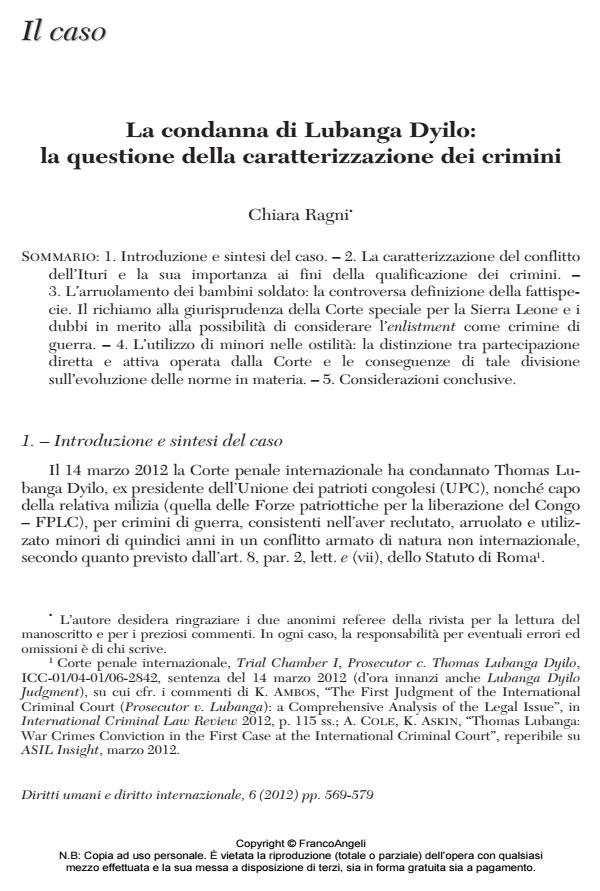La condanna di Lubanga Dyilo: la questione della caratterizzazione dei crimini
Titolo Rivista DIRITTI UMANI E DIRITTO INTERNAZIONALE
Autori/Curatori Chiara Ragni
Anno di pubblicazione 2012 Fascicolo 2012/3
Lingua Italiano Numero pagine 11 P. 569-579 Dimensione file 130 KB
DOI 10.3280/DUDI2012-003005
Il DOI è il codice a barre della proprietà intellettuale: per saperne di più
clicca qui
Qui sotto puoi vedere in anteprima la prima pagina di questo articolo.
Se questo articolo ti interessa, lo puoi acquistare (e scaricare in formato pdf) seguendo le facili indicazioni per acquistare il download credit. Acquista Download Credits per scaricare questo Articolo in formato PDF

FrancoAngeli è membro della Publishers International Linking Association, Inc (PILA)associazione indipendente e non profit per facilitare (attraverso i servizi tecnologici implementati da CrossRef.org) l’accesso degli studiosi ai contenuti digitali nelle pubblicazioni professionali e scientifiche
On 14 March 2012 the International Criminal Court delivered its long awaited first judgment in the case of Thomas Lubanga Dyilo. The accused was convicted of committing, as co-perpetrator, war crimes consisting of enlisting and conscripting of children under the age of 15 years and using them to participate actively in hostilities in the context of an armed conflict not of an international character. The article critically analyzes the Court’s reasoning with regard to some crucial issues pertaining the definition of the crimes, such as the nature of the armed conflict where they have been committed and the legal characterization of the relevant conducts. The analysis is conducted with the view to assess the impact of the conclusions reached by the Court on the progressive development of international criminal and humanitarian law.
Chiara Ragni, La condanna di Lubanga Dyilo: la questione della caratterizzazione dei crimini in "DIRITTI UMANI E DIRITTO INTERNAZIONALE" 3/2012, pp 569-579, DOI: 10.3280/DUDI2012-003005